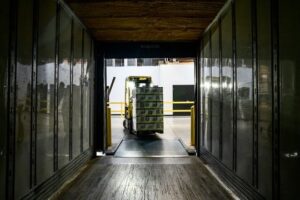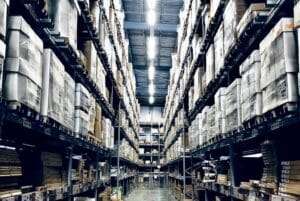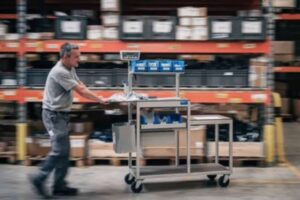Hazardous Materials Management: How Does a WMS Ensure Compliance and Safety?
WMS software
Logistics
Supply Chain
September 29, 2025
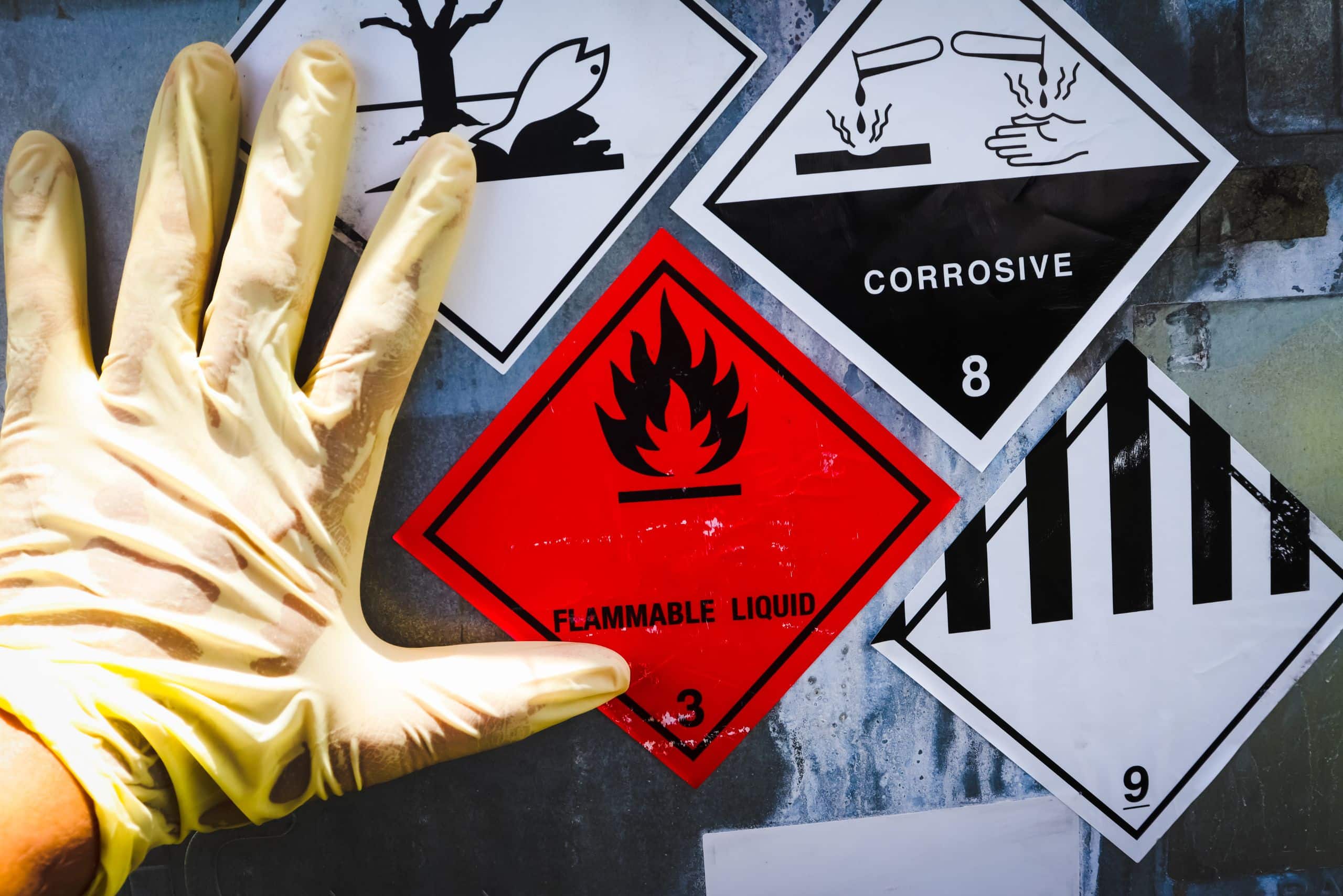
A storage error, an oversight in labeling, a poorly informed order preparer... In the management of hazardous materials, the slightest flaw can have serious consequences: human, environmental, financial and legal.
Do you think your warehouse is really safe?
Managing flammable, toxic, corrosive, or explosive products isn't just a logistical constraint; it's a huge responsibility, governed by highly complex regulations. Between the requirements of the CLP, ADR, and Seveso regulations, managing hazardous materials is a daily challenge that leaves no room for improvisation.
Faced with this complexity, relying solely on manual processes and human vigilance is like navigating a storm with only a compass. The risk of error is ever-present.
What if technology could transform this source of stress and risk into a competitive advantage? A Warehouse Management System (WMS), equipped with a hazardous materials module, is no longer a luxury, but the cornerstone of safe and efficient supply chain optimization. It acts like a true conductor, ensuring that every product, every movement, and every location scrupulously adheres to the strictest safety standards.
The challenges of managing hazardous materials in logistics
Hazardous materials management goes beyond simple inventory management . It directly affects the safety of your staff, environmental protection , and the sustainability of your business. Every hazardous product carries multiple risks: fires, explosions, toxic leaks, environmental contamination, not to mention serious workplace accidents for operators.
An incident isn't just a matter of cleanup costs or fines. It can permanently tarnish your reputation, lead to the suspension of your operating license, and expose you to criminal liability. In this context, precision and thoroughness are not options.
Also, the complexity is increased by the diversity of products . Lithium batteries, alcohol-based perfumes, phytosanitary products or industrial gases are not managed in the same way. Each category has its own storage , handling and transport constraints. A perfect classification of products is therefore the starting point of any security approach.
The goal is twofold : to ensure maximum protection while maintaining smooth and efficient logistics flows. Technology, and more specifically, powerful warehouse management software, helps achieve this delicate balance.
Regulations: The essential framework for your activity
It is impossible to approach the management of hazardous materials without mastering the regulatory triptych that governs it in Europe: CLP, ADR, and Seveso . These texts are not simple recommendations; they constitute the law . Your WMS platform must be able to integrate their constraints into its very operating logic.
The CLP regulation: Classification, Labelling and Packaging
Regulation (EC) No. 1272/2008, known as CLP (Classification, Labelling and Packaging), is the cornerstone of hazard identification. It imposes a globally harmonized system (GHS) for:
- Classify substances and mixtures according to the hazards they present (physical, health, environmental).
- Label products with standardized hazard pictograms, hazard statements (“Causes severe skin burns”) and precautionary statements.
- Package substances in a manner that ensures safety during transport and storage.
For your warehouse, this means that every incoming product must be clearly identified . The WMS software must be able to record these CLP classifications in the product master record. This information is not just descriptive; it becomes a master data that will dictate all subsequent logistics operations, from storage to picking.
The ADR agreement for road transport
The ADR (European Agreement concerning the International Carriage of Dangerous Goods by Road) governs, as its name suggests, transport . But what does this have to do with warehouse management? It's very simple: temporary storage
The ADR classifies materials into 9 main hazard classes, each with its own subdivisions.
- Class 1 : Explosive materials and objects (e.g. fireworks).
- Class 2 : Gases (compressed, liquefied or dissolved under pressure, such as aerosols or oxygen cylinders).
- Class 3 : Flammable liquids (e.g. paints, varnishes, gasoline, alcohols).
- Class 4.1 : Flammable solids.
- Class 4.2 : Substances liable to spontaneous combustion.
- Class 4.3 : Substances which, in contact with water, release flammable gases.
- Class 5.1 : Oxidizing substances (which may cause or promote a fire).
- Class 5.2 : Organic peroxides.
- Class 6.1 : Toxic materials (e.g. pesticides).
- Class 6.2 : Infectious substances.
- Class 7 : Radioactive materials.
- Class 8 : Corrosive materials (e.g. sulfuric acid, soda).
- Class 9 : Miscellaneous dangerous materials and objects (e.g. lithium batteries, environmentally hazardous materials).
This agreement also defines requirements for packaging, vehicle signage (the famous orange panels) and driver training.
This ADR classification must be integrated into your warehouse management software. Indeed, when preparing orders, the system must be able to verify that the products grouped in the same shipment are compatible, generate the appropriate transport documentation and ensure that the quantities do not exceed the authorized thresholds for a given type of transport.
The Seveso Directive and high-risk sites (ICPE)
The Seveso Directive aims to prevent major industrial accidents involving hazardous substances. It applies to Classified Installations for Environmental Protection (ICPE) that store significant quantities of these products.
There are two thresholds:
- Seveso low threshold : imposes obligations for prevention and the implementation of a safety management system.
- Seveso upper threshold : adds much stricter requirements, such as the establishment of internal and external emergency plans and regular safety reports.
Being classified as a Seveso site radically impacts storage management. Safety distances between buildings, retention areas to contain spills, specific firefighting systems... everything is scrutinized by the authorities (DREAL). A WMS equipped with a "hazardous materials" module is a must-have for a Seveso site. It provides real-time proof to inspectors that you are complying with the maximum storage quantities authorized per zone and that you have complete control over your inventory management.
The central role of WMS in the management of hazardous materials
A Warehouse Management System is not just a simple inventory management tool. It is the warehouse pilot . In the context of hazardous materials, it becomes the guarantor of safety and compliance , transforming regulatory constraints into automated operational rules.
Product classification and safety data management
First and foremost, the database must be flawless. The WMS software must allow for extremely precise product classification, including:
- Hazard codes (CLP)
- The ADR class
- UN numbers
- Safety Data Sheets (SDS)
- Information on incompatibilities
- Expiration dates and batch numbers
This wealth of information allows the system to make intelligent decisions at every stage of the logistics flow.
The Compatibility Matrix: Intelligence at the Heart of Storage Management
This is arguably the most critical feature. Can you store a flammable product next to an oxidizing product? The answer is no, and that's a basic rule. But what about the hundreds of other possible combinations?
The compatibility (or incompatibility) matrix is a feature of the WMS's "hazardous materials" module that integrates these complex rules. In concrete terms, when the system needs to assign a storage location for an incoming product, it doesn't just look for a free space. It analyzes the nature of the products already stored in neighboring locations (above, below, next to it) and will only suggest a location that scrupulously respects the separation rules.
This automation eliminates the risk of human error , which could have catastrophic consequences, and guarantees perfectly secure storage management.
Optimization of logistics flows and picking in complete safety
Security shouldn't come at the expense of efficiency. A high-performance WMS optimizes logistics flow management while taking security constraints into account.
- Intelligent Slotting : The system can define dedicated areas in the warehouse for each hazard class. The most hazardous products or those requiring specific equipment (ventilated areas, temperature-controlled) will be automatically directed to the appropriate areas.
- Safe picking paths : The WMS can optimize order picker routes to minimize travel in high-risk areas. It can also group picking tasks by product type to avoid the simultaneous handling of incompatible substances on the same cart.
- Quantity management : The system constantly ensures compliance with the maximum quantities authorized per storage cell or per zone, in accordance with regulatory thresholds (notably Seveso).
Traceability: A regulatory and security imperative
In the event of an incident (leak, contamination, product recall), you must be able to react within minutes. Where is the offending batch stored? What other products were nearby? Which customer orders are affected?
End-to-end traceability is a non-negotiable requirement. The WMS ensures this monitoring in real time:
- Upon receipt : Recording of batch number, expiry date, supplier.
- During storage : Tracking every movement of the product from one location to another.
- When preparing orders : Precise association of the batch shipped to each customer order.
This granularity of information allows you to immediately isolate a defective batch, provide accurate information to emergency services in an emergency, and demonstrate your diligence to authorities in the event of an audit. This makes inventory management precise and reliable.
The essential features of the “hazardous materials” module of a WMS
Not all inventory management software is equal when it comes to the complexity of hazardous materials. When choosing your WMS solution , certain modules and features are truly essential.
Here is a checklist for evaluating a WMS platform:
- Advanced product sheet management : Ability to store all safety data (ADR/CLP classes, risk phrases, etc.).
- Configurable Storage Rules Engine : Must include a compatibility matrix to manage product co-habitation.
- Warehouse mapping by risk zones : Allows you to visualize and dedicate specific zones (flammable liquids, corrosives, etc.).
- Batch and serial number management : For total traceability, from receipt to dispatch.
- Storage/picking algorithms (FIFO/FEFO) : Essential for managing expiration dates (First-Expired, First-Out).
- Location Management Module : Must be able to manage maximum quantity constraints per location or per zone.
- Order preparation assistance : Operator guidance for safe picking (e.g. not mixing certain products on a trolley).
- Edition of compliant transport documents (ADR) : Automatic generation of the necessary slips and declarations.
- Management of containers and packaging : Monitoring of the types of approved packaging used.
- Audit trail and reporting : Historical record of all movements and events to ensure compliance and facilitate audits.
A Warehouse Management System that ticks all these boxes becomes much more than a tool: it is the guarantor of your compliance and the pillar of your warehouse security strategy.
Beyond Technology: The Human Factor and Training
The best WMS software in the world will never be 100% effective without trained teams and clear procedures. Technology is a guide, a safeguard, but humans remain the key players.
Training of order pickers and warehouse staff
An order picker handling hazardous materials is not an operator like any other. He must receive specific and ongoing training on:
- Risk recognition : Understanding the meaning of CLP pictograms on labels.
- Handling procedures : How to handle, carry and move different types of containers safely.
- Wearing Personal Protective Equipment (PPE) : Knowing which equipment (gloves, goggles, masks, etc.) to use for each type of product.
- Using WMS : Mastering mobile terminals to follow system instructions without error.
- Emergency procedures : Know first aid procedures, the location of fire extinguishers, safety showers and evacuation procedures.
Training is not a one-time activity. Regular refreshers and role-playing exercises must be scheduled to maintain a high level of vigilance and competence.
Emergency Procedures: When Preparation Makes All the Difference
What to do in the event of a chemical spill? How to respond to a fire in a flammable product storage area?
There is no room for improvisation. Clear, written, and publicly known emergency procedures must be established in collaboration with local emergency services (fire brigade). In the event of an alert, the WMS can instantly provide response teams with:
- A map of the warehouse with the exact location of the incident.
- The precise list of products stored in the area concerned, with their safety data sheets (SDS).
- The exact quantities of each product.
This information allows emergency services to save time and adapt their intervention strategy to the real danger, thus protecting the lives of their teams and limiting the impact of the incident.
Make safety your competitive advantage
Hazardous materials management is more than just a legal obligation. It's a commitment to your employees, your customers, and the environment. Today, corporate responsibility in sustainable logistics is under increasing scrutiny, and impeccable safety management is a major differentiator.
Implementing a hazardous materials module in your WMS is the strategic investment that allows you to turn this complex constraint into a strength. By automating compliance, optimizing storage management, and ensuring traceability, you don't just reduce risks. You increase your operational efficiency, strengthen the trust of your partners, and build a resilient and sustainable supply chain.
Don't wait for an incident to occur before taking action. Take the lead and make risk management the foundation of your logistics excellence.
Contact us to find out how our WMS solution can be configured to specifically address your hazardous materials management challenges.
FAQ: Everything you need to know about hazardous materials management
What is the difference between CLP and ADR classification?
CLP focuses on identifying and communicating the hazards of chemicals themselves (via labels) for their use and storage. ADR focuses specifically on regulating the transport of these goods by road, defining hazard classes for transport, packaging rules, and vehicle signage. Both complement each other for the safe management of logistics flows.
Is my e-commerce warehouse that sells perfumes and deodorants affected by hazardous materials management?
Yes, absolutely . Perfumes, hairsprays, aerosol deodorants, and nail polishes often contain flammable substances (alcohol, propellant gas). They are considered hazardous materials subject to ADR regulations for transport and require specific storage precautions. These products must therefore be managed rigorously, even in e-commerce.
Is a WMS mandatory for storing hazardous products?
Although it is not "mandatory" in the law in the same way as an operating permit, it has become practically indispensable to ensure compliance with regulations (Seveso, ICPE). In the event of an inspection or incident, proving diligence without a tool like a WMS is extremely difficult, if not impossible.
What is a compatibility matrix in a WMS?
This is a software feature that integrates chemical storage rules . It prevents the WMS from assigning a storage location to a product if it is incompatible with materials already present nearby. It provides a safety feature to prevent dangerous chemical reactions.
How does WMS help with batch traceability?
WMS software scans and records the batch number of each product upon receipt. It then tracks this batch through each internal movement (from location A to location B) and associates it with a specific customer order upon shipment. This allows you to know in just a few clicks where each unit in a batch is located and to whom it was sent.
Most read articles
WMS software
Logistics
Supply Chain
October 3, 2025
Making your cross-docking project a success: Steps, tools and pitfalls to avoid for a successful transition
Imagine: your goods arrive at the dock, are immediately sorted, and almost immediately depart for their final destination—all in less than 24 hours. No more unnecessary storage costs, no more shortages due to dormant inventory. That's the promise of cross-docking.
WMS software
Logistics
Supply Chain
September 29, 2025
Hazardous Materials Management: How Does a WMS Ensure Compliance and Safety?
Managing flammable, toxic, corrosive, or explosive products isn't just a logistical constraint; it's an immense responsibility, governed by highly complex regulations. Indeed, managing hazardous materials is a daily challenge that leaves no room for improvisation.
WMS software
Logistics
Supply Chain
July 3, 2024
Inventory management using WMS software
To master your inventory management, it is imperative to use suitable and efficient inventory management software. With this automation, you can monitor the status of your inventory in real time, allowing you to make informed and rapid decisions to avoid stock-outs or overstocks.




